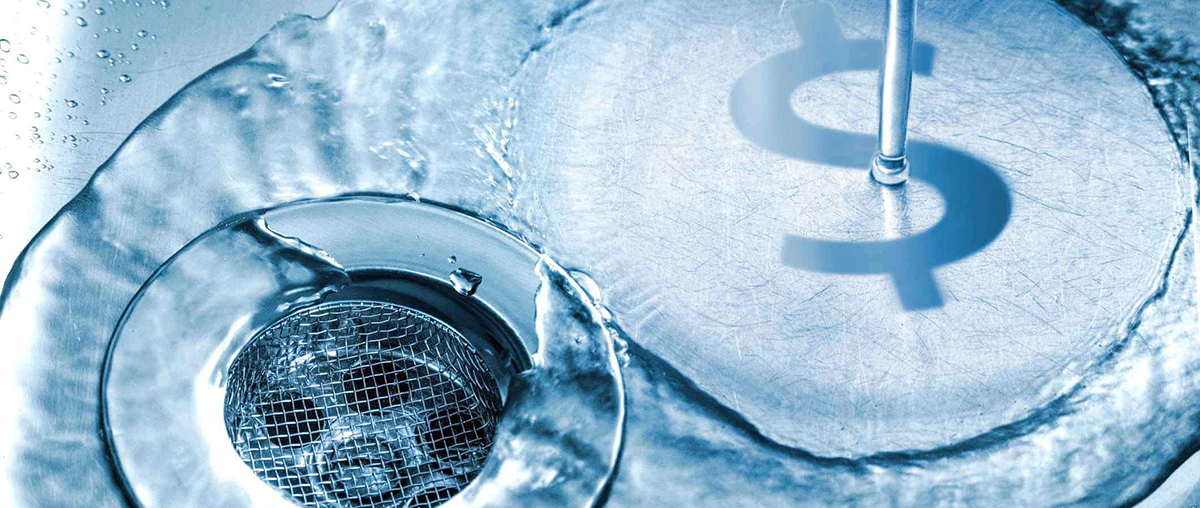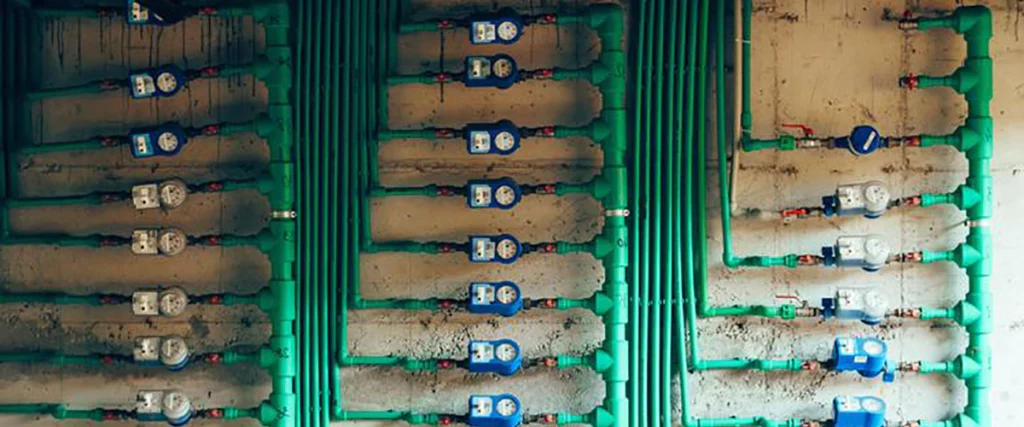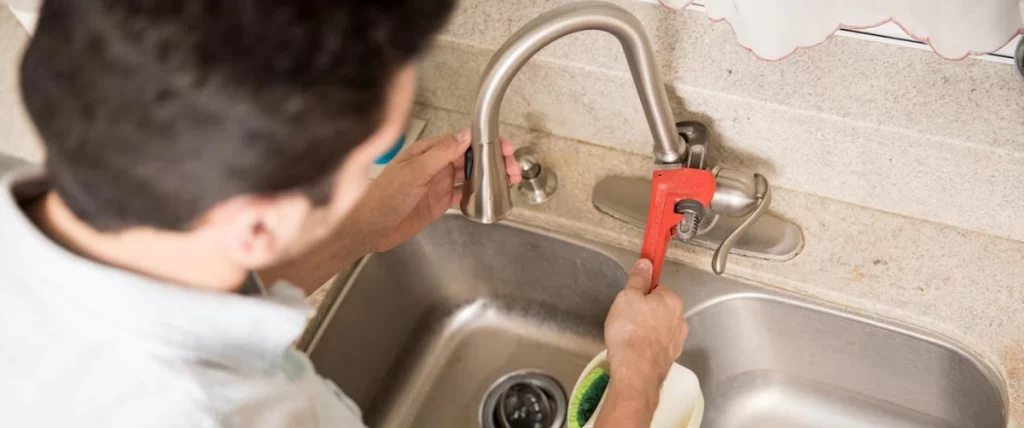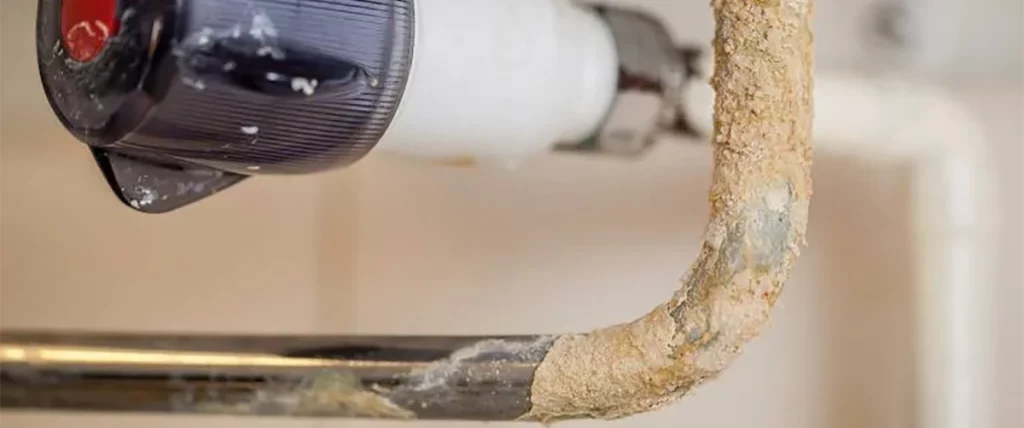Managing household expenses is essential, and an unexpected increase in your water bill can be concerning. Understanding the potential reasons behind a surge in water costs is crucial for effective budgeting and conservation efforts. Here are five common factors that might contribute to an increase in your water bill:
Contents
1. Leaks in the Plumbing System
Undetected leaks in your plumbing system can result in a continuous loss of water. Leaky pipes, faucets, or toilets can significantly contribute to increased water consumption and, subsequently, higher bills. Regularly inspect your plumbing for any signs of leaks and address them promptly to prevent unnecessary water wastage.

Discovering leaks in your plumbing system can be a cause for concern, not only due to potential water damage but also because it can contribute to an increase in your water bill. Here’s a comprehensive guide to understanding, detecting, and addressing leaks in your plumbing system:
Causes of Leaks:
- Pipe Corrosion:
- Over time, pipes may corrode, leading to small or large leaks. This is particularly common in older plumbing systems.
- Joint Seals and Connections:
- Seals and connections between pipes can weaken, resulting in leaks. Regular wear and tear or poor initial installation can contribute to this issue.
- High Water Pressure:
- Excessive water pressure can strain pipes, causing them to develop leaks. Monitoring and regulating water pressure is crucial in preventing this type of leakage.
Detecting Leaks:
- Visible Signs:
- Look for visible signs of leaks such as damp spots on walls, ceilings, or floors. Discoloured paint or wallpaper can also indicate water seepage.
- Unexplained Water Bill Increases:
- Sudden spikes in your water bill without a corresponding increase in water usage may indicate an undetected leak. Monitor your bills and investigate any unexpected changes.
- Metre Test:
- Conduct a simple metre test. Turn off all water sources in your home and check your water metre. If it continues to register usage, there might be a leak.
Addressing Leaks:
- Professional Plumbing Inspection:
- If you suspect a leak but cannot locate it, consider hiring a professional plumber. They can conduct a thorough inspection using specialised equipment to identify and fix the issue.
- DIY Repairs:
- For visible leaks in pipes or joints, you can attempt DIY repairs using appropriate tools and materials. Temporary fixes such as pipe wraps or epoxy putty can be used until professional help arrives.
- Pipe Replacement:
- In cases of extensive corrosion, it might be necessary to replace sections of the plumbing system. Consult with a plumber to determine the most effective course of action.
Preventive Measures:
- Regular Inspections:
- Conduct regular visual inspections of your plumbing system. Check for signs of corrosion, dampness, or visible leaks.
- Monitoring Water Bills:
- Pay attention to your water bills. Sudden increases may indicate a hidden leak, prompting you to investigate promptly.
- Maintaining Water Pressure:
- Ensure your water pressure is within the recommended range. If it’s consistently high, consider installing a pressure regulator.
2. Running Toilets: Causes, Detection, and Solutions
A running toilet can be a silent culprit behind escalating water bills. A continuously running toilet wastes a significant amount of water over time. Faulty flush valves, flappers, or fill valves can contribute to this issue. Ensuring timely repairs and maintenance can prevent excessive water usage and keep your bills in check.

A running toilet is not only an annoyance but can also lead to increased water bills. Understanding the causes behind this common issue, detecting it promptly, and implementing effective solutions can help maintain a well-functioning plumbing system. Here’s a detailed guide:
Causes of Running Toilets:
- Faulty Flapper:
- The flapper is a rubber component that seals the tank and allows water to flow into the bowl during flushing. If it doesn’t seal properly, water can continuously leak into the bowl.
- Worn-out Flush Valve:
- Over time, the flush valve that allows water to enter the bowl during flushing can wear out, leading to a constant trickle of water.
- Issues with Fill Valve:
- Malfunctions in the fill valve can result in continuous water flow into the tank, causing the toilet to run continuously.
Detecting a Running Toilet:
- Audible Running Water:
- If you hear water running in the toilet when it’s not in use, it’s a clear indication of a running toilet.
- Visual Inspection:
- Remove the toilet tank lid and observe the water level. If the water is consistently higher than the overflow tube, it suggests a running toilet.
- Dye Test:
- Add a few drops of food colouring into the tank. If the colour appears in the bowl without flushing, there’s a leak.
Addressing a Running Toilet:
- Flapper Replacement:
- If the flapper is worn or damaged, replacing it is a simple and effective solution. Ensure the new flapper provides a proper seal.
- Flush Valve Repair or Replacement:
- If the flush valve is faulty, it might need repairing or replacing. This involves draining the tank and removing the old valve before installing a new one.
- Fill Valve Adjustment or Replacement:
- Adjusting the fill valve height can sometimes solve the issue. If not, consider replacing the fill valve to ensure proper functioning.
Preventive Measures:
- Regular Checks:
- Periodically check your toilet for signs of running water. Promptly addressing any issues can prevent water wastage and increased bills.
- Maintenance Routine:
- Include checking toilet components in your regular home maintenance routine. Look for wear and tear, and replace parts as needed.
- Educate Household Members:
- Educate everyone in your household about the importance of reporting and addressing running toilets promptly.
3. Increased Water Usage: Causes and Conservation Tips
Changes in your household’s water usage patterns can lead to higher bills. This might include accommodating more residents, increased appliance usage, or changes in outdoor watering habits. Be mindful of alterations in your water consumption and consider adopting water-saving practices to mitigate the impact on your bills.

Experiencing a sudden increase in water usage can be concerning, both for the environment and your household budget. Identifying the reasons behind the surge in water consumption and adopting water-saving practices are crucial steps in managing this issue. Here’s a comprehensive guide to understanding increased water usage:
Common Causes of Increased Water Usage:
- Changes in Household Size:
- An increase in the number of residents in your household naturally leads to higher water usage. Be mindful of changes in your living situation.
- Appliance Usage:
- New appliances or changes in usage patterns, such as using a dishwasher more frequently or upgrading to a larger washing machine, can contribute to higher water consumption.
- Outdoor Watering:
- Seasonal changes, landscaping projects, or overwatering can significantly impact water usage. Outdoor activities like gardening and lawn watering often contribute to increased consumption.
- Hidden Leaks:
- Undetected leaks in the plumbing system, whether within the house or underground, can result in continuous water loss, leading to a spike in usage.
Detecting Increased Water Usage:
- Monitoring Water Bills:
- Regularly review your water bills. Sudden and unexplained increases may indicate a water usage issue.
- Smart Metering:
- Some homes are equipped with smart metres that provide real-time data on water usage. Utilise this technology to identify patterns and detect anomalies.
- Periodic Checks:
- Conduct periodic checks for leaks in and around your home. Look for damp spots, discoloured areas, or unusual sounds indicating water wastage.
Water Conservation Tips:
- Fix Leaks Promptly:
- Address any leaks as soon as they are detected. Leaks can significantly contribute to increased water usage and higher bills.
- Water-Efficient Appliances:
- Consider investing in water-efficient appliances. Modern dishwashers, washing machines, and toilets are designed to use less water while maintaining efficiency.
- Smart Irrigation Practices:
- Adjust your outdoor watering schedule based on seasonal needs. Use rain sensors or smart irrigation systems to optimise water usage in your garden.
- Educate Household Members:
- Ensure that everyone in your household is aware of the importance of water conservation. Encourage mindful practices, such as turning off taps when not in use and using water responsibly.
4. Seasonal Variations in Water Usage: Managing Changes Effectively
Seasonal changes can influence water consumption, particularly in outdoor activities like gardening and lawn watering. During warmer months, increased irrigation needs can contribute to higher bills. Adjust your watering schedule according to seasonal requirements and consider using water-efficient practices to manage costs effectively.
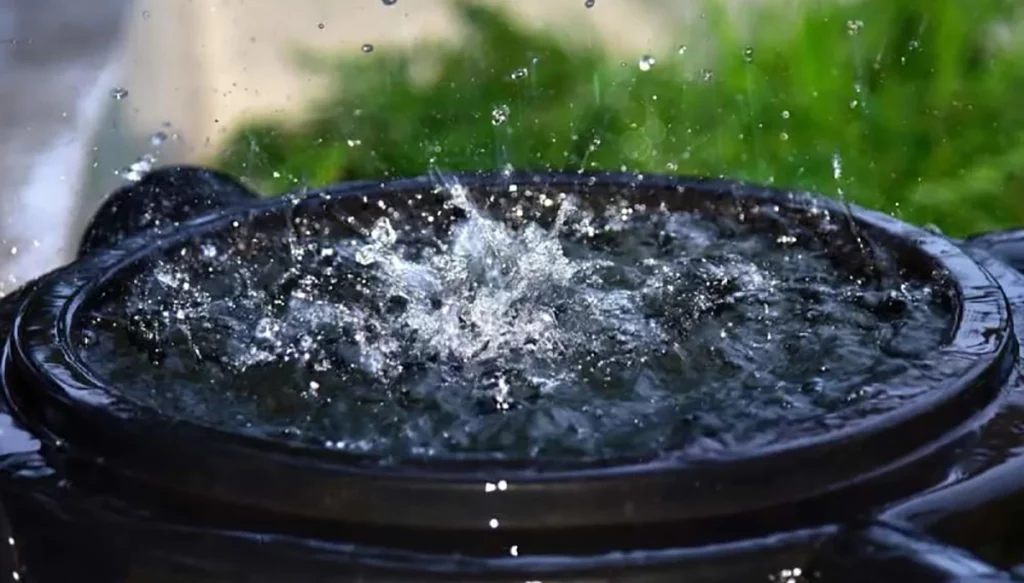
Seasonal variations can significantly impact water usage patterns in households. Understanding these fluctuations and adopting water-efficient practices during different seasons is essential for both environmental conservation and responsible budgeting. Here’s a comprehensive guide to managing water usage throughout the year:
Summer Water Usage:
- Outdoor Activities:
- Increased outdoor activities such as gardening, lawn watering, and recreational water use contribute to higher water consumption during the summer.
- Pool Maintenance:
- Pool maintenance requires additional water, especially during hot months. Regularly monitor pool water levels and ensure that the water is not being wasted.
- Shorter Shower Duration:
- Warmer temperatures often result in shorter and more refreshing showers. Encourage household members to be mindful of water usage while maintaining personal hygiene.
Autumn Water Conservation:
- Reduced Outdoor Watering:
- As temperatures cool down, plants require less water. Adjust outdoor watering schedules accordingly and consider collecting rainwater for garden use.
- Home Maintenance:
- Autumn is an ideal time for home maintenance. Check for leaks, fix any issues, and ensure that the plumbing system is in good condition before winter sets in.
Winter Water Efficiency:
- Indoor Activities:
- Colder weather often leads to more indoor activities. Ensure that water-efficient appliances are used, and remind household members to turn off taps when not in use.
- Preventing Frozen Pipes:
- During freezing temperatures, prevent frozen pipes by insulating exposed pipes and allowing a slow drip from faucets to maintain water flow.
Spring Conservation Practices:
- Spring Cleaning:
- Spring cleaning often involves increased water usage. Be mindful of water consumption during cleaning activities and consider using a bucket instead of a hose for outdoor cleaning.
- Garden Preparation:
- Spring is a time for garden preparation. Use compost and mulch to retain soil moisture, reducing the need for excessive watering.
General Water Conservation Tips:
- Fix Leaks Promptly:
- Regardless of the season, promptly fix any leaks in your plumbing system to prevent unnecessary water wastage.
- Upgrade to Water-Efficient Appliances:
- Consider upgrading to water-efficient appliances, such as low-flow toilets and energy-efficient washing machines, to reduce overall water consumption.
- Educate Household Members:
- Foster a culture of water conservation within your household. Educate everyone about responsible water use and encourage the adoption of water-saving habits.
By being aware of seasonal variations and implementing water-saving practices accordingly, you can effectively manage water usage in your household. Consistent efforts to conserve water contribute to environmental sustainability and help maintain reasonable water bills throughout the year.
5. Faulty Appliances and Water Usage: Identifying Issues and Solutions
Appliances such as dishwashers and washing machines can develop faults that result in excessive water usage. Check for any malfunctions, such as leaks or inefficient water use, in your appliances. Regular maintenance and prompt repairs can help ensure that your appliances operate efficiently and do not contribute to unnecessary water expenses.

Faulty appliances can be significant contributors to increased water usage in households. Identifying and addressing issues promptly is crucial for both water conservation and preventing spikes in water bills. Here’s a comprehensive guide to understanding and managing faulty appliances:
Common Faults Leading to Increased Water Usage:
- Leaky Washing Machines:
- Faulty seals, hoses, or connections in washing machines can result in leaks, leading to excessive water usage during each cycle.
- Dishwasher Malfunctions:
- Issues with the dishwasher’s water inlet valve, spray arm, or door seal can cause water to leak, significantly impacting water consumption.
- Running Toilets:
- Faulty fill valves, flappers, or flush valves in toilets can lead to continuous running, wasting substantial amounts of water over time.
- Dripping Faucets:
- A dripping faucet may seem minor, but over time, it can contribute to a significant increase in water usage. Faulty washers or seals are common culprits.
Detecting Faulty Appliances:
- Visible Leaks:
- Inspect appliances regularly for visible leaks, dampness, or water pooling around the machine. This is a clear indication of a problem.
- Unusual Sounds:
- Strange noises during appliance operation can signal issues. Pay attention to any unusual sounds, as they may indicate malfunctioning components.
- Periodic Checks:
- Conduct periodic checks of all appliances connected to the water supply. Look for signs of wear, rust, or corrosion.
Addressing Faulty Appliances:
- Prompt Repairs:
- If you notice any issues with your appliances, such as leaks or unusual sounds, seek prompt professional repairs. Timely intervention can prevent water wastage.
- Regular Maintenance:
- Schedule regular maintenance for your appliances. This includes inspecting hoses, valves, and seals for wear and tear and replacing any components showing signs of damage.
- Upgrading Appliances:
- Consider upgrading to water-efficient appliances. Modern models often come with advanced features that not only save water but also enhance overall efficiency.
Preventive Measures:
- Educate Household Members:
- Ensure that everyone in your household is aware of the proper use and care of appliances. Encourage responsible usage and the prompt reporting of any issues.
- Install Water Alarms:
- Consider installing water alarms near appliances that are prone to leaks. These alarms can detect water accumulation and alert you to potential issues.
- Regular Inspections:
- Incorporate appliance checks into your routine home maintenance. Regular inspections help identify and address faults before they lead to excessive water usage.
By staying vigilant, addressing faulty appliances promptly, and incorporating preventive measures, you can effectively manage water usage in your home. Consistent maintenance not only conserves water but also contributes to the longevity and efficient operation of your appliances.
Understanding the factors that can lead to an increase in your water bill is the first step in addressing the issue. Regular monitoring, prompt repairs, and adopting water-saving habits contribute not only to cost savings but also to sustainable water usage. By staying vigilant and addressing potential issues promptly, you can maintain control over your water bills and contribute to water conservation efforts.
FAQs
Sudden increases in your water bill can be attributed to factors such as undetected leaks, running toilets, changes in water usage patterns, seasonal variations, or faults in household appliances. Conduct a thorough check to identify and address the specific cause.
Check for signs of leaks, such as damp spots, discoloured walls, or unexplained increases in your water bill. Conduct a simple metre test by turning off all water sources and monitoring your water metre for any movement, indicating a potential leak.
Running toilets are often caused by issues with flush valves, flappers, or fill valves. Inspect these components for wear or damage and replace them if necessary. Timely repairs can prevent water wastage and reduce your water bill.
Adopt water-saving habits such as fixing leaks promptly, using water-efficient appliances, adjusting irrigation practices according to seasons, and being mindful of overall water consumption. These measures contribute to both cost savings and sustainable water use.
Yes, faulty appliances like dishwashers and washing machines can lead to excessive water usage. Regularly check for leaks, malfunctions, or inefficiencies in your appliances, and conduct maintenance or repairs as needed to ensure efficient water use.



